
The Business of Fashion
Agenda-setting intelligence, analysis and advice for the global fashion community.

Agenda-setting intelligence, analysis and advice for the global fashion community.
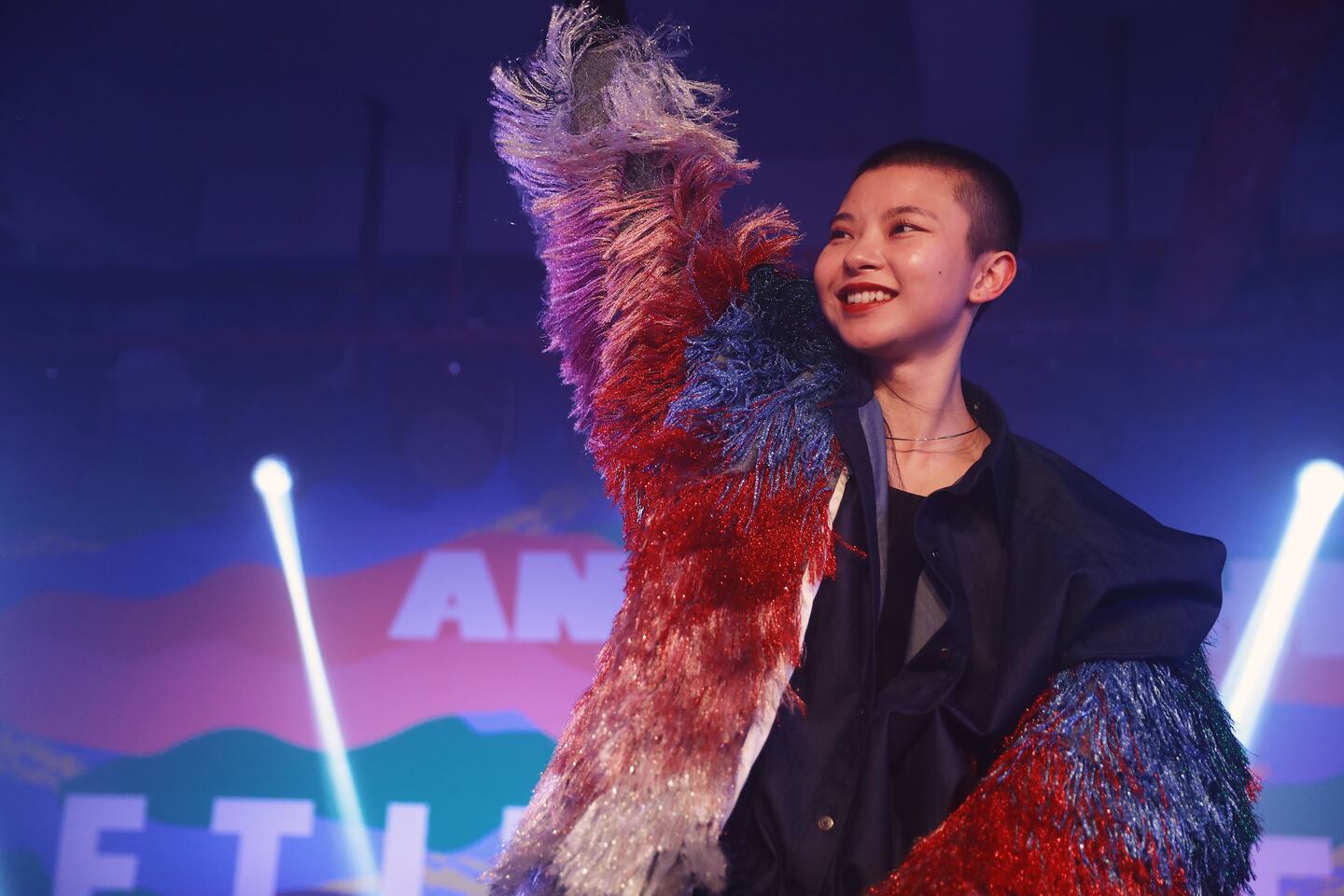
SHANGHAI, China — With bulging eyes and mouths agape, they were the very picture of new arrivals in a city they had underestimated. Buyers from a well-known Japanese department store stood waiting for a show to start at the latest edition of Shanghai Fashion Week. Still stunned from their encounter with a mob of ticket touts selling black market invitations outside, they appeared flummoxed but reflective.
“Power,” whispered one surprised retailer to her colleague. “That’s what it is. I couldn’t put my finger on it before, but now I get it. You can literally feel the power in the atmosphere here.”
Surveying the scene at the lively venue in the heart of China’s commercial capital, the Japanese buyer declined to share her name but she was clearly captivated by what she saw as Shanghai’s ambitious march on her hometown of Tokyo. And faintly protective too.
After listing off Japan’s many strengths — its long legacy of producing master fashion designers, unrivalled street style, sophisticated consumers and cutting edge apparel industry — she stopped abruptly mid-sentence.
ADVERTISEMENT
“Wait, do you mean Tokyo as an international hub? Like, Asia’s fashion business capital? Hmmm, that’s tricky,” she paused, turning in vain to her colleague for some reassurance. “We won’t lose that chance to Shanghai — will we?”
While Tokyo’s fashion scene is incredibly vibrant, diverse and influential, it is also insular and conservative when it comes to the way the industry operates. Shanghai, on the other hand, is in its honeymoon period with the global fashion industry. Bounding full-throttle ahead, the city’s fashion leaders seem happy to experiment at every juncture — and supremely unfazed when things go a bit wrong.
"People here have a can-do attitude which means things can be surprisingly efficient even though they're sometimes guilty of being inconsistent or even chaotic," says Shaway Yeh, group style editorial director at Modern Media. "Anyway, Shanghai has the weight of China behind it. It's that simple. That's precisely why Hong Kong and Singapore are not in the running as Asian fashion capital."
Confident in its position as the gateway to Asia’s powerhouse economy and the region’s largest consumer market, Shanghai Fashion Week is now able to attract niche and contemporary brands to China from around the world. And those most eager to join the event’s 25,000 square metres of selling space often hail from other Asian nations.
Beacon for Asia and broker for China
As vice secretary-general, Lv Xiaolei is the power broker behind Shanghai Fashion Week. "Madame Lu," as she is deferentially called by almost everyone in the city, chooses her words very carefully — especially when talking about competitors in Asia.
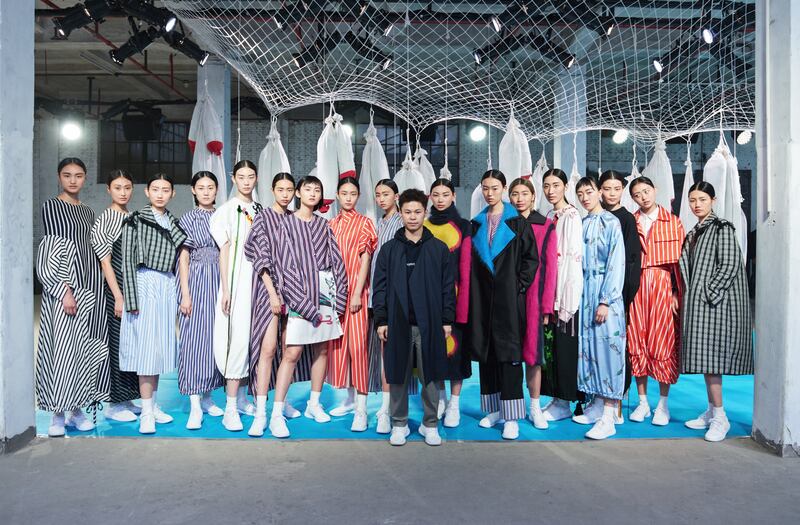
Minki Cheng A/W17 at Shanghai Fashion Week | Source: Courtesy
“Well, South Korea's institutions are willing to promote their local brands in China,” she offers, keen to focus on the relatively new and still fragile spirit of cooperation with her Asian counterparts. “And Masahiko Miyake, chairman of the Japan Fashion Week Organisation, he came to us during this Shanghai Fashion Week to sign a strategic partnership with us too. We've been talking for a while, you know. From rivals to friends.”
ADVERTISEMENT
When asked directly what her ambition is for Shanghai Fashion Week in the Asian context, Madame Lu spends a long time ruminating, responding obliquely and changing the subject before she finally concedes: “OK, we’re trying to build the most influential fashion trade platform in Asia,” she sighs. “Is that ambition enough?”
Without doubt, Shanghai Fashion Week is a work in progress and has much to prove. It may lack the rigour of Tokyo and the pizzazz of Seoul but, make no mistake, it overshadows them both in terms of chutzpah. If for no other reason than the strength and scale of its market, China is in a league of its own. Not even India, with its own vast fashion industry in Delhi and Mumbai, comes close. No wonder Shanghai's fledgling designers can seem so dangerously overconfident.
“I think sooner or later Shanghai will become the top fashion week in the Asian-Pacific region and I think eventually even Europe will need to buckle up,” says Moto Guo, the Malaysian designer shortlisted for last year’s LVMH Prize.
“Everybody’s working hard to break the Shanghai market. But even so, I was surprised to learn we had almost nine or 10 young brands from Malaysia participating at Shanghai Fashion Week this time.”
The Autumn/Winter 2017-18 collection was Guo's second selling season at The Tube, a tightly curated Shanghai showroom founded by Zemira Xu who has developed a knack for spotting some of China's more progressive designer talent such as Xiao Li and Xu Zhi.
“The whole industry here is moving so fast,” Guo continues. “It’s so competitive and so aggressive. But at the same time, people here are getting more and more open-minded. They’re willing to listen to young voices and even spend money to buy our work, which is definitely a great advantage for us as a young label.”
China’s mainstream brands like Reineren and young designer "repats" like Shushu/Tong, Deepmoss and Andrea Jiapei Li may dominate the runways here, but stroll through any of the official trade shows hosted by Shanghai Fashion Week and you can hear dozens of foreign languages spoken by designers, sales agents, showroom reps, and distributors manning the exhibitor booths.
Shanghai Fashion Week’s sales floors have become so international, in fact, that brands from overseas now outnumber those from mainland China at the four official trade shows. A tally of the brands at Mode, Ontimeshow, Showroom Shanghai and Dadashow revealed that international brands make up 58 percent of the 1,000-plus brands exhibiting this season. Just under half of those are from other Asian countries and territories.
ADVERTISEMENT
Entire delegations flew in from South Korea, Taiwan, Hong Kong and Japan. From the Southeast Asian region, star designers like Indonesia’s Tex Saverio set up at Shanghai’s Mode showroom. From further afield, Italians, Turks, Brits, French, Australians, Americans and Scandinavians all descended on fashion week to boost business in the all-important Chinese mainland.
“Shanghai does a good job of this because of the city's heritage as the 'Paris of the East' starting in the 1930s,” says Madame Lu. “The reason we can attract so many designers [from here and abroad] is that Shanghai is the most fashionable city [in China]. Not only does Shanghai have a very important professional and consumer target audience here, it’s also the most inclusive city for immigrants.”
From show business to real business
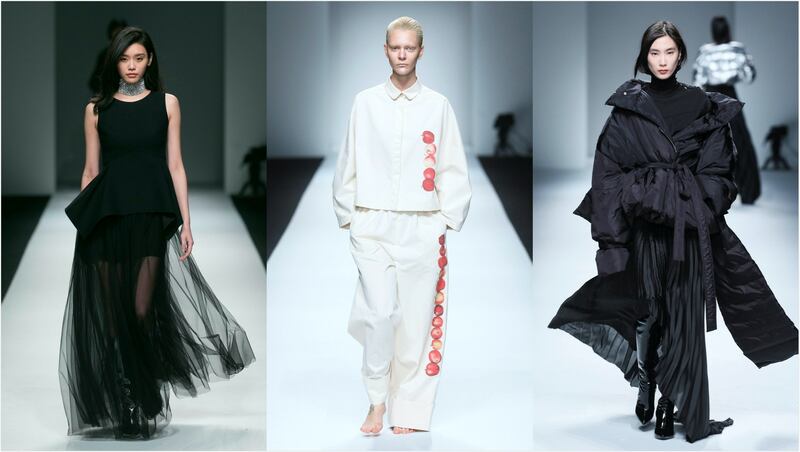
From left: Anirac, Deepmoss and Siastella, A/W17 at Shanghai Fashion Week | Source: Courtesy
Shanghai Fashion Week shifted gears six years ago when Madame Lu was given free rein. Since then, she has transformed it from a provincial event fixated on showbusiness to an international platform for real business.
Although she is clearly pleased with the increasingly international dimension of the event’s participants, she makes no bones about her top priority. “We want to see our Chinese designers become recognised internationally. That’s the [most] important thing for us,” she says.
While she continues to invite foreign brands to join the catwalk calendar – Damir Doma and Les Hommes were guests this edition – Madame Lu seems confident in her subtler international strategy. It’s something along the lines of "build it and they will come."
“We’re open to whole trade shows coming in from abroad now [and] we’ve already signed strategic partnerships with fashion week institutions in Paris, Milan, London and elsewhere. But rather than spending too much time recruiting from abroad, we’ll build ourselves up first and let people [be interested to join us] based on our own progress.”
So far, it seems to be working. Massimiliano Bizzi, founder of Milan’s well-known trade show White, was in town testing the waters with brands like Ping He and Greta Boldini preparing for a much bigger entry next season.
“I think now the timing is right, especially for the contemporary segment — contemporary is growing faster than luxury in China, you know — and because we’re starting to see many new multi-brand stores emerge around the country,” says Bizzi.
Gemma A. Williams, author of the book "Fashion China," believes that Shanghai Fashion Week is “carving a credible niche” by quickly adapting elements from more established fashion weeks abroad. Shanghai’s Kids Wear platform, GreenCode sustainability fair and its Fashion Weekend B2C play are all new initiatives.
However, she suggests that the designer roster needs to be more strictly curated and that the event’s timing needs to be reconsidered. By April, some buyers have already spent their seasonal budgets and there are missed synergies with the city’s interior and home fair Design Shanghai. “It runs the month prior and attracts over 40,000 visitors into the city,” she says.
Shanghai Fashion Week has been consolidating power across China but it is not alone in the market. One week before Shanghai, Mercedes-Benz China Fashion Week takes place in Beijing, a city where most of China’s fashion publishing houses are based because of the media’s need for "guanxi" (deep connections) with the government. Fashion weeks in Guangzhou and Shenzhen have become a sort of third pillar in the south thanks to their manufacturing prowess.
Leading a fragmented market
“Look, this is a big cake; we can’t just have it all,” says Madame Lu, in her most diplomatic tone. “China is such a vast country [so] the co-existence of us all is not necessarily a bad thing.”
Shaway Yeh can afford to be more blunt. “There’s no doubt now that Shanghai Fashion Week is ‘the’ fashion week in China,” she asserts. “The local government here is open minded and supportive. Plus many of the industry leaders in Shanghai are Western-educated or trained so it’s a more seamless transition to global business.

Staffonly designed by Shimo Zhou and Wen Ya A/W17 at Shanghai Fashion Week | Source: Courtesy
Williams agrees that Shanghai Fashion Week is more “forward thinking and innovative” than its Chinese competitors. “I think the programming in Beijing is lacking, evidenced by the fact that another fashion week takes place there which is entirely off schedule and in opposition to it, called Fashion Now,” she says.
As for the newer fashion weeks in the south of the country, Williams is cautious: “I’m sure some do carry out big business; however these events have a bad reputation with the tastemakers in China.”
Not everyone is ready to write off Shanghai’s rivals. Enrico Camurati is the partner of a showroom called Meds Made, focusing on niche brands from Southern European countries like Italy, Spain, Greece and Portugal.
“We just did Shenzhen Fashion Week last month and now we’re doing Shanghai. We were planning to do a trade event in Chengdu too, but they cancelled it last minute,” says Camurati.
“Many Chinese buyers still prefer to go to Paris, Milan, London and New York so I don’t know if Shanghai will ever be the fifth column, but it’s true that Shanghai is the king of all the fashion weeks in China; that’s for sure. Many buyers come here from all over the country but we can’t focus exclusively on Shanghai because there are some exciting and important buyers you can’t yet reach from here.”
“For example, our best buyer for Lautem bags is from Changchun. That’s almost as far north as Harbin. Business in remote places is really booming and sometimes you have to go to them.”
Even Madame Lu can’t keep up with China’s sprawling retail network. “We all know there’s a great interest from cities like Chengdu and Changsha … but I couldn’t have imagined there were such fashion boutiques in places like Qinghai,” she exclaims, referring to the far-flung Chinese province located north of Tibet.
Over time, Shanghai Fashion Week has become an informal retail broker of sorts. "Look at Uma Wang's boutique in Xintiandi Style mall," Madame Lu enthuses. Until recently, China's small-scale designers didn't have access to many of the country's department store giants. "Now things are different," she explains, citing Wangfujing Group in Beijing, Golden Eagle Group in Nanjing, and Bailian Group in Shanghai.
“They’re willing to talk to us now and offer some of their biggest commercial complexes to make boutiques and other spaces. One example is Bailian’s Oriental Department Store in the Xujiahui district; I think we're pushing these stores to change their role as a 'landlord', which is an outdated one.”
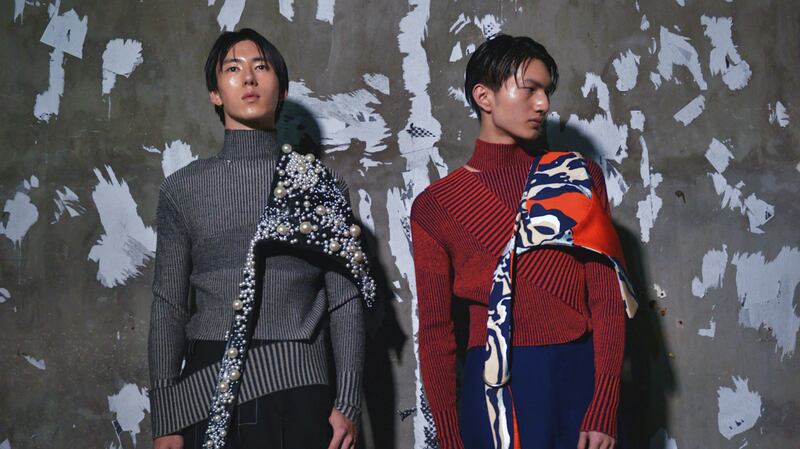
Ximon Lee A/W17, Shanghai Fashion Week | Source: Courtesy
Improving wholesale performance
“Our sales here keep growing and growing,” says Yasu Kouda, a representative of Japanese showroom Xin Tokyo, who brought Tokyo Fashion Week favourite Somarta and other Japanese designers like Shiroma and Keisuke Yoshida to Shanghai Fashion Week.
“On average, for individual brands, sales have increased around 50 percent each season. This is the fourth time we’ve showed at Mode trade show and the second time we’ve come here on this scale,” he adds.
"Most buyers at Shanghai Fashion Week are from the Chinese mainland," says Yeli Gu, founder of Ontimeshow, a trade show exhibiting 255 brands that enjoyed a boost in attendance of 60 percent this season. "But we expect even more Asian buyers to be coming to Shanghai Fashion Week since the scene here is getting more interesting every season. We've already noticed a strong rise of international buyers coming to our trade show," she adds, pointing to retailers such as Isetan, Harvey Nichols, Opening Ceremony and Mark Styler.
Jack Cassidy, menswear designer and contemporary buyer for Selfridges, was one of a handful of big European retailers at this season's event. In addition to the Chinese designer gems he discovered — such as Staffonly and Random Clichés — Cassidy found interesting non-Chinese designers based in Shanghai too. “There were brands like Sirloin which have such a concise point of view,” he says, referring to the brand designed by Mao Usami from Japan and Alve Lagercrantz from Sweden.
“It was really refreshing to go to The Tube showroom because it was so considered and well-curated. When I compare [Shanghai] to other fashion weeks, it’s definitely the strongest I have been to in Asia,” he adds.
“With the right guidance and market development, [foreign brands] can learn to adopt many of the idiosyncrasies specific to China while keeping their brand DNA strong,” says Bedi Ye, chief operations officer of DFO International, a market development agency with a platform called Dadashow showroom representing brands from more than ten countries.
Chinese labels like By Fang and Cynthia & Xiao are among the firm’s best sellers, says DFO chief executive Meimei Ding, but international brands like Whole9Yards from Singapore and Use Unused from Hungary make up an important part of her growing business.
“Both brands were difficult to sell during their first season with us, but as we worked more closely together and the designers responded well to market demands … we started reaching over 30 to 50 accounts for each per season and growth has been consistently good since,” she says.
Not everyone did business on the scale they had hoped, however. Sarah Park, the manager of Seoul-based showroom Ledome brought 16 brands from South Korea including a few participants of Seoul Fashion Week. “Overall, the number of buyers decreased [for us] so it fell short of our expectations,” says Park. “But Eunjukoh, C-Zann-E and J Woo were still our best sellers here in Shanghai.”
Park would not speculate why buyer traffic was down at Ledome but bilateral relations could be one explanation. Geopolitical tensions between South Korea and China have been on the rise, prompting the Chinese government to introduce some restrictions on Korean products and travel to the country
Business meets pleasure; culture meets commerce
"We see ourselves as much more than a trade show," Yeli Gu explains, referring to the collaborative live performance between Shangguan Zhe of Sankuanz and Swiss artists Supermafia presented at Ontimeshow. "On our opening night, we produced three fashion shows and a hip-hop rap music performance, with some of the greatest artists in the industry all under the youth culture theme."
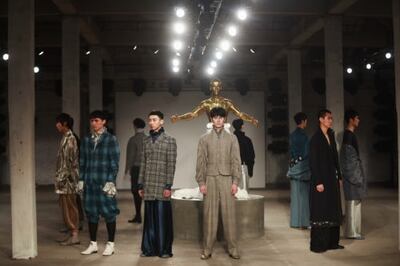
Hiuman A/W17 at Shanghai Fashion Week | Source: Courtesy
Labelhood is another unconventional showcase. Tasha Liu, one of the founders of the growing Dong Liang retail empire, was asked by Madame Lu to partner with her to run the Labelhood platform. Together, they secured Samsung, Nike and Converse as sponsors of the four-day event where 26 fashion brands took part in live presentations, concerts and exhibitions. "Shanghai Fashion Week is like an umbrella helping our industry in China to focus more on market segmentation," says Liu.
In an edgy mash-up of art, commerce, B2C and B2B strategies, Liu united industry favourites like Angel Chen and Museum of Friendship with the likes of Samuel Gui Yang and Chen Tianzhuo's Asian Dope Boys, a label that marries the avant-garde with those who like to party hard.
But it was left to Shaway Yeh to orchestrate one of the more thought-provoking — and at times provocative — attractions of the week. At a forum and exhibition curated by Yehyehyeh called "Eyes Wide Open," Yeh and Lyndon Neri invited Paola Antonelli, senior curator of architecture and design at New York’s Museum of Modern Art (MoMA) to debate the role fashion plays in society's big issues.
Antonelli joined exciting Chinese fashion designers like Uma Wang, Ximon Lee and Feng Chen Wang to explore the topics like body politics and social justice. “We want to embolden fashion's next generation in China to take greater leadership in our creative industries here — especially in sustainable design, material innovation and responsible business practices,” says Yeh.
“Sure, we’ve still got a long way to go. But the fact that we can now have this kind of intellectual forum during Shanghai Fashion Week says a lot about how far the whole event has already come. We're making a better stage for ourselves now, not just a bigger one, and I think the rest of Asia has definitely noticed.”
Disclosure: Robb Young travelled to China as a guest of Shanghai Fashion Week.
Related Articles:
[ Shanghai Fashion Week Ups the AnteOpens in new window ]
[ Op Ed | 7 Multi-brand Boutiques Transforming Chinese RetailOpens in new window ]
[ Why Asia’s Brightest Stars Struggle to ShineOpens in new window ]
With consumers tightening their belts in China, the battle between global fast fashion brands and local high street giants has intensified.
Investors are bracing for a steep slowdown in luxury sales when luxury companies report their first quarter results, reflecting lacklustre Chinese demand.
The French beauty giant’s two latest deals are part of a wider M&A push by global players to capture a larger slice of the China market, targeting buzzy high-end brands that offer products with distinctive Chinese elements.
Post-Covid spend by US tourists in Europe has surged past 2019 levels. Chinese travellers, by contrast, have largely favoured domestic and regional destinations like Hong Kong, Singapore and Japan.